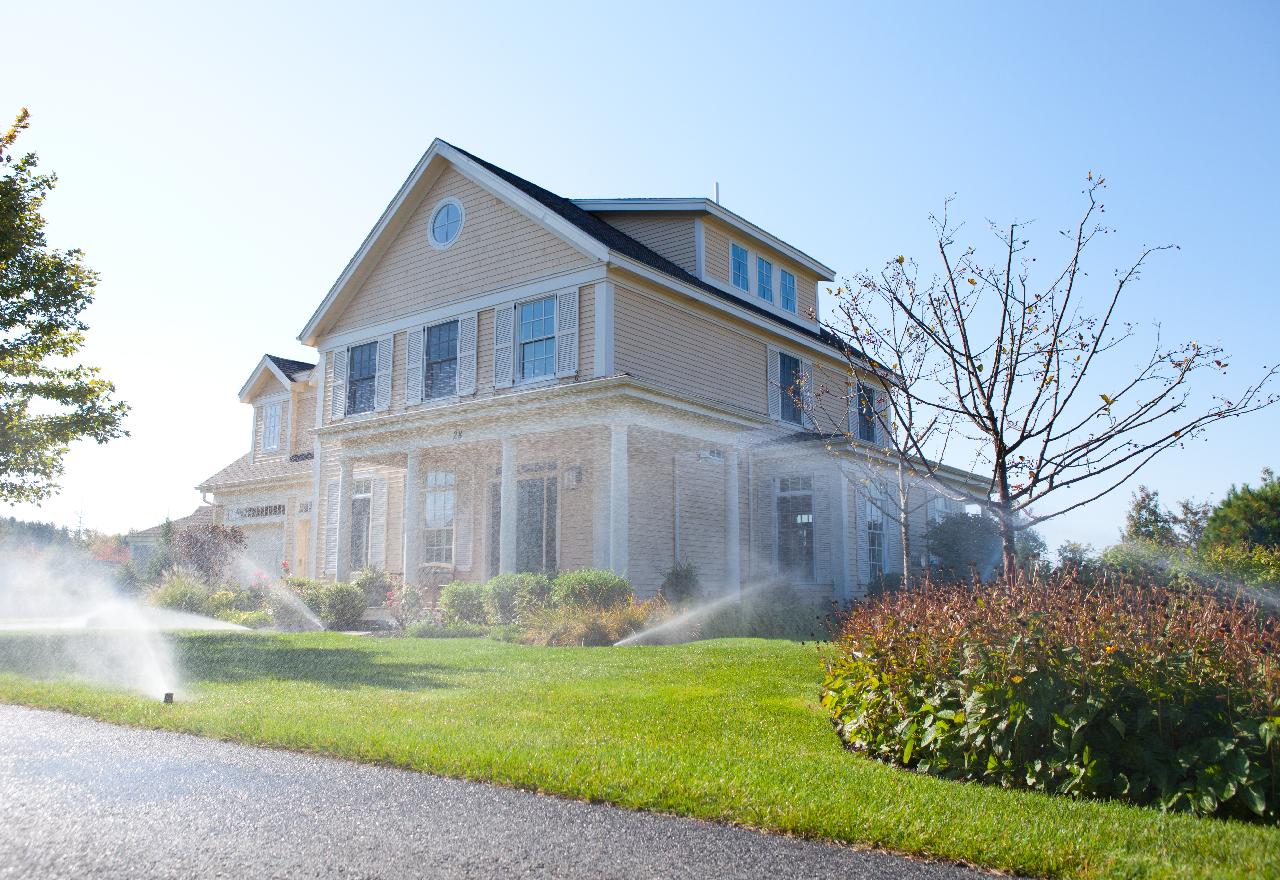No one enjoys carrying heavy hoses around their yard to water it. Furthermore, they are clogged and snagged far too frequently. For these reasons, it is advisable to consider establishing an automatic sprinkler system.
These make life much easier and save money and time by using a timer and controller to set up an automated watering program. It’s also a terrific way to ensure your landscape is watered efficiently while avoiding the physical labor involved.
An automatic sprinkler system consists of:
- The controller
- The valve system
- Underground piping
- Sprinkler heads
The Controller
An electrical controller is linked to a set of valves embedded in a ground box. The main water supply is diverted to the box and divided into several zones. An individual valve can be programmed to open each of these zones independently.
Valve System
This is hooked to the beginning of the line and connects to all of the pipes. Timer-controlled electrical impulses can be used to open and close them. In the event of a leak, you can manually shut off the valve system to prevent it from feeding water to the system.
Underground Piping
Polyurethane or PVC piping is standard on most sprinkler systems. Both materials are simple to cut into various sizes and can survive harsh environmental conditions. The pipes are buried and connected to your primary water supply. Their design assures a consistent supply of water throughout your garden.
Sprinkler Heads
These tiny devices emerge from the ground and irrigate your garden. Different sprinkler zones have designated valves that allow you to manage or shut off the water supply in specific regions in the event of a leak. Sprinkler heads are classified into three types: spray heads, bubblers, and rotor heads.
The ideal sprinkler head for your system is determined by your lawn’s size, shape, and watering requirements. Ensure that your sprinkler heads are evenly distributed around the grass since mixing heads can cause overwatering in some places and under-watering in others.
Installing an Automatic Sprinkler System
You can try installing an automatic sprinkler system independently, but hiring an expert is recommended. They can precisely assess the structural characteristics of your landscape to determine which solution is most suited to your needs. They’ll partition your lawn into zones based on the vegetation and watering requirements.
The installation professional will dig trenches and install pipes to link all sprinkler heads to the central water supply lines once the zones have been established. The trenches are finally filled with dirt, and sod is laid down. The whole process can be completed when done professionally in one to two days. A larger landscape with more sophisticated features may require a few more days to finish.
Automatic sprinkler systems are intended to prevent lawns from being over-or under-watered. Even the most basic system may drastically minimize water waste. You can bet on them to keep your lawn in good condition. All you have to do is set the system based on its watering requirements, and you’re ready to go.
How to ensure automatic sprinkler systems work efficiently?
In the end, the effectiveness of an automatic sprinkler system is only as effective as its programming. Most sprinkler controllers allow you to program how many times per day or week each zone turns on and the period it stays on during each cycle. Part of smart planning includes plants in each area with similar watering requirements so that no one gets too much or too little water.
A rain sensor that interrupts the watering schedule when it detects a predefined amount of rainfall is a beneficial addition to the system because a sprinkler system loses water if it comes on right after heavy rain.
Rain sensors are inexpensive and straightforward to install in the control panel. They save water, which is a valuable resource worldwide, and prevent your grass, flowers, and vegetables from becoming overwatered, leading to fungal infections and decay. Automatic sprinkler systems are, without a doubt, the solution for your lawn water needs.
Discover more from Futurist Architecture
Subscribe to get the latest posts sent to your email.

![modern apartment [article_title]](https://www.futuristarchitecture.com/wp-content/uploads/2025/03/6-Extravagant-Tips-to-Turn-Your-Headboard-Into-a-Royal-900x540.jpg)

